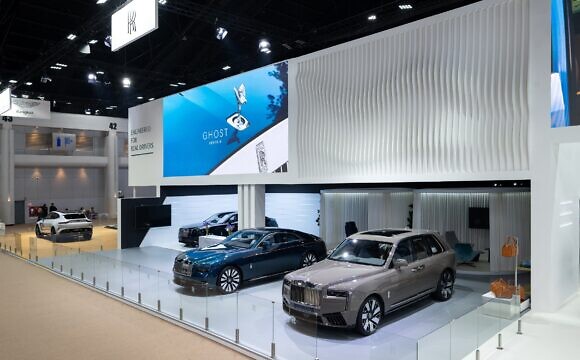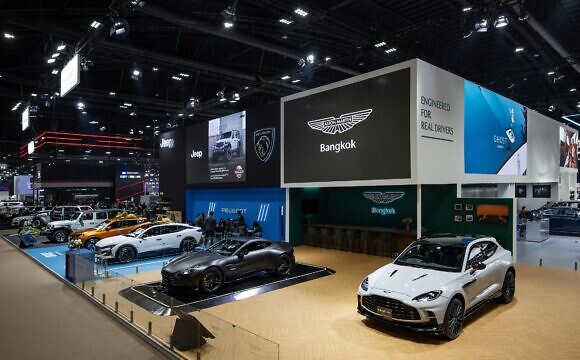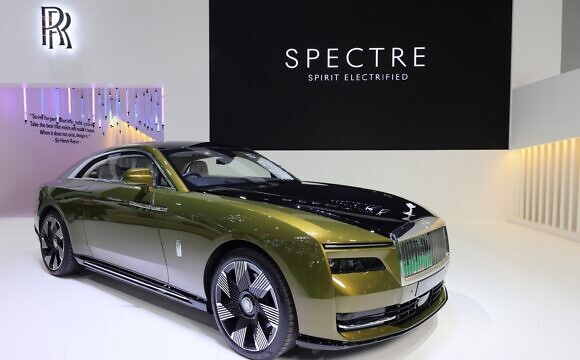Talking cars with Aston Martin’s design director
 Robb Report Thailand chats with Aston Martin’s design director Marek Reichman at the Bangkok International Motor Show 2016 that ran from 21 March – 3 April 2016.
Robb Report Thailand chats with Aston Martin’s design director Marek Reichman at the Bangkok International Motor Show 2016 that ran from 21 March – 3 April 2016.
On the DB11
The DB11 is a significant car in Aston Martin’s history. It’s a name synonymous with the changing face of Aston Martin with lineage from the early 50s. We make sports cars, ones that we drive for as long as we would like. The DB11, from concept to completion, took just over three and a half years, combines technological innovations and architecture; for example, its chassis design is close to alchemy. We used special techniques to harden the aluminium pieces; at the same time, there is cylinder deactivation. It’s a marriage of technology and beauty.
On his background
My father worked as a blacksmith, which is why I grew up with knowledge of making things. It’s where I picked up my artistic skills, and realised that design surrounds us, whether it’s through a traditional method of designing or through a craft. Design is integral to the human race. My father is Polish, and my mother is English. I grew up in a family with many car fanatics. I wanted to be an industrial designer, to learn the science behind materials, so I studied industrial design to get the knowledge base.
On electric cars
We have the Aston Martin Rapide S. Electric cars are vitally important as markets look to zero emissions. It’s important to stay in touch with the market. I noticed the great thing about these models, having worked on the prototype, is that there is no sound. Just as a symphony has crescendo and quiet moments – both options are beautiful. Whether it’s the sound of air or the sound of horsepower, the car has a beautiful moving form.
On creating emotional connections with his designs
It’s about the timeless nature of design matched with the skills and the training to create something with both function and beauty. It’s about finding the best way of doing things in an equally beautiful manner. It’s about the right proportions. It’s about stretching the time frame of a car or an object, with someone saying ‘wow’ 103 years later. Since the company was founded, over 70,000 cars have been produced, and over 90% of these vehicles still exist presently. One doesn’t throw an Aston Martin away.
On the Aston Martin customer’s emotional connections with the brand
In theory, our customers don’t know what they want till they see it. It’s about how we interact with our customers, and how they interact with our cars. Our customers have expectations based on their experiences with us and the company’s 103-year heritage. There is an expectation that an Aston Martin will be beautiful.
On design rules
The DB11 was created based on the Golden Ratio, which is evident in nature, such as in the curves of a Nautilus shell. All the artists (and the designers) did were to get the right measurements and proportions. There is a relationship between architecture and car design. Both fields allow people to function in similar ways; this is in relation to flow; how you fit in relation to the space.
On design inspirations
Zaha Hadid, Norman Foster, and Renzo Piano.
On creative methods and processes
You’re part of a machine; an organisation. On methodology, I insist that we understand a language in a sketch. The work is done with a sketch, but we also sketch multiple times until we get the right feeling; the right emotion. It’s a manual process. I sketch with pen and paper. It’s about knowing how to generate form and shape from a two-dimensional sketch.
You always need someone to bounce ideas off. I do so with my designers and clay modellers. Just before I left the studio for Bangkok, I wasn’t happy with the form or the shape [of a design]. I told my team to just fix it, and what they did surpassed my expectations. You can’t create in a vacuum and you can’t execute [a design] in a vacuum. For the DB10, it took us six months to travel from the first sketch to driving the car. It’s about executing [the design] as quickly as possible.











